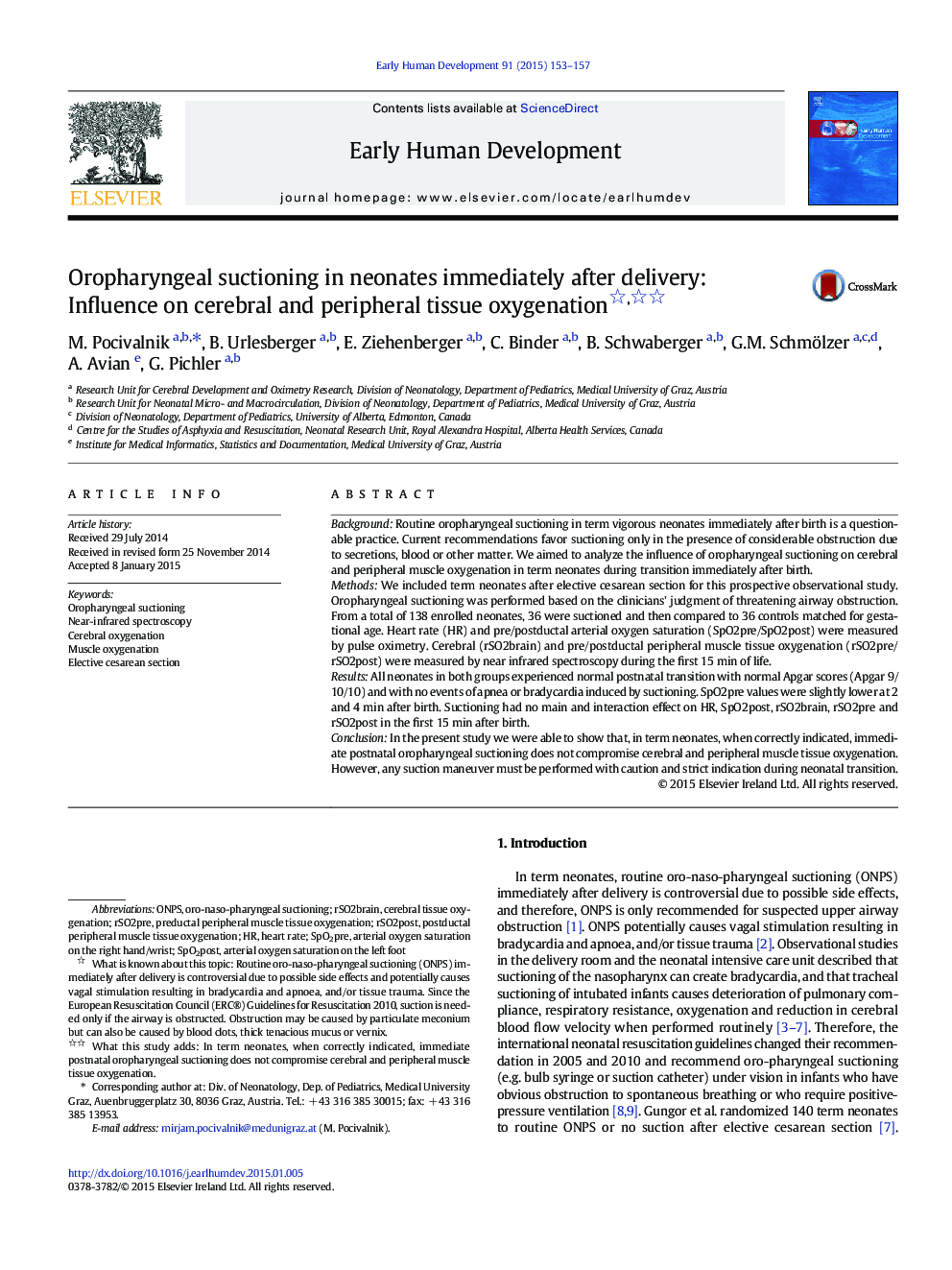| کد مقاله | کد نشریه | سال انتشار | مقاله انگلیسی | نسخه تمام متن |
|---|---|---|---|---|
| 3916469 | 1252040 | 2015 | 5 صفحه PDF | دانلود رایگان |
• We performed oropharyngeal suctioning during transition as recommended and did not observe any side effects.
• Lack of evidence about the influence of suctioning on brain and peripheral tissue oxygenation led to perform this study.
• Near-infrared spectroscopy enables non-invasive continuous measurement of regional oxygen saturation during transition.
• Regional cerebral tissue oxygenation is not compromised in suctioned term neonates after cesarean section.
• Peripheral muscle tissue oxygenation (pre- and postductal) is not compromised too (suction group versus control group).
BackgroundRoutine oropharyngeal suctioning in term vigorous neonates immediately after birth is a questionable practice. Current recommendations favor suctioning only in the presence of considerable obstruction due to secretions, blood or other matter. We aimed to analyze the influence of oropharyngeal suctioning on cerebral and peripheral muscle oxygenation in term neonates during transition immediately after birth.MethodsWe included term neonates after elective cesarean section for this prospective observational study. Oropharyngeal suctioning was performed based on the clinicians' judgment of threatening airway obstruction. From a total of 138 enrolled neonates, 36 were suctioned and then compared to 36 controls matched for gestational age. Heart rate (HR) and pre/postductal arterial oxygen saturation (SpO2pre/SpO2post) were measured by pulse oximetry. Cerebral (rSO2brain) and pre/postductal peripheral muscle tissue oxygenation (rSO2pre/rSO2post) were measured by near infrared spectroscopy during the first 15 min of life.ResultsAll neonates in both groups experienced normal postnatal transition with normal Apgar scores (Apgar 9/10/10) and with no events of apnea or bradycardia induced by suctioning. SpO2pre values were slightly lower at 2 and 4 min after birth. Suctioning had no main and interaction effect on HR, SpO2post, rSO2brain, rSO2pre and rSO2post in the first 15 min after birth.ConclusionIn the present study we were able to show that, in term neonates, when correctly indicated, immediate postnatal oropharyngeal suctioning does not compromise cerebral and peripheral muscle tissue oxygenation. However, any suction maneuver must be performed with caution and strict indication during neonatal transition.
Journal: Early Human Development - Volume 91, Issue 2, February 2015, Pages 153–157
